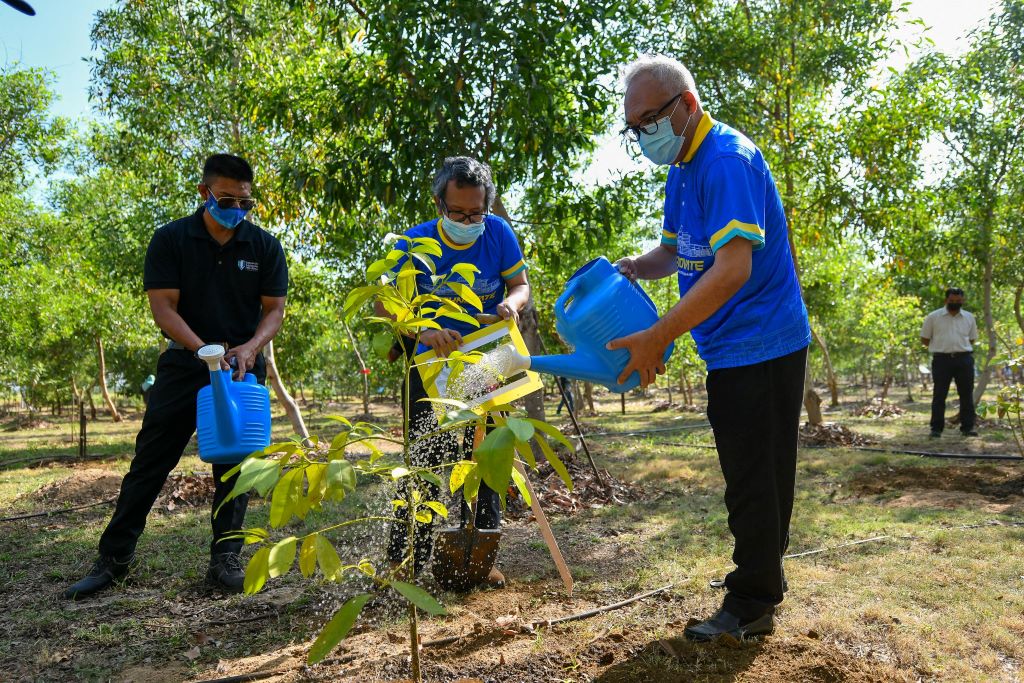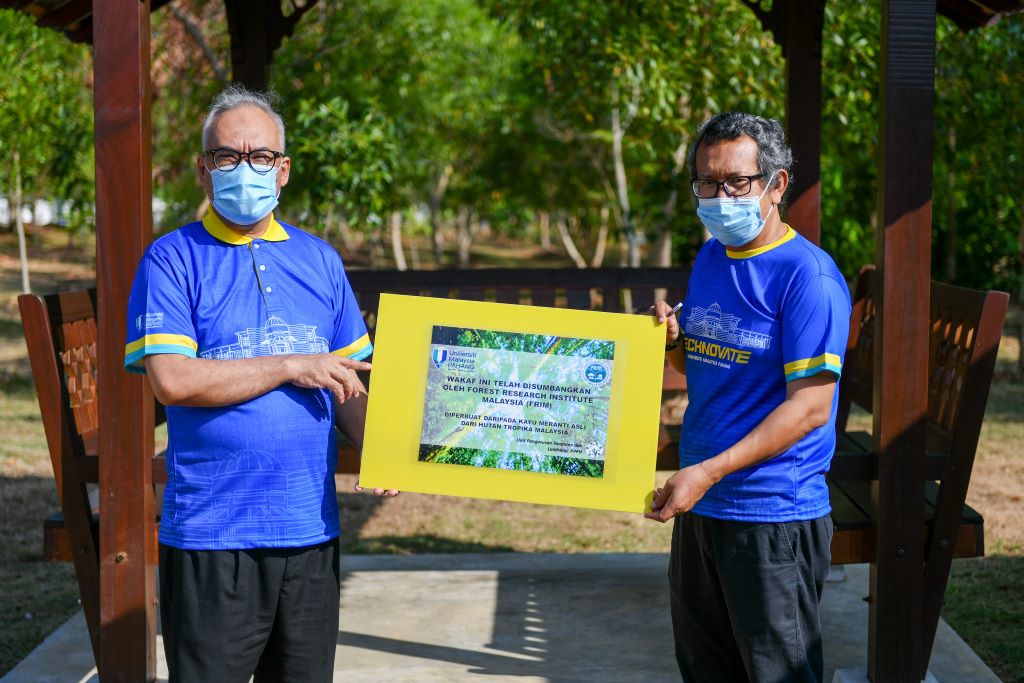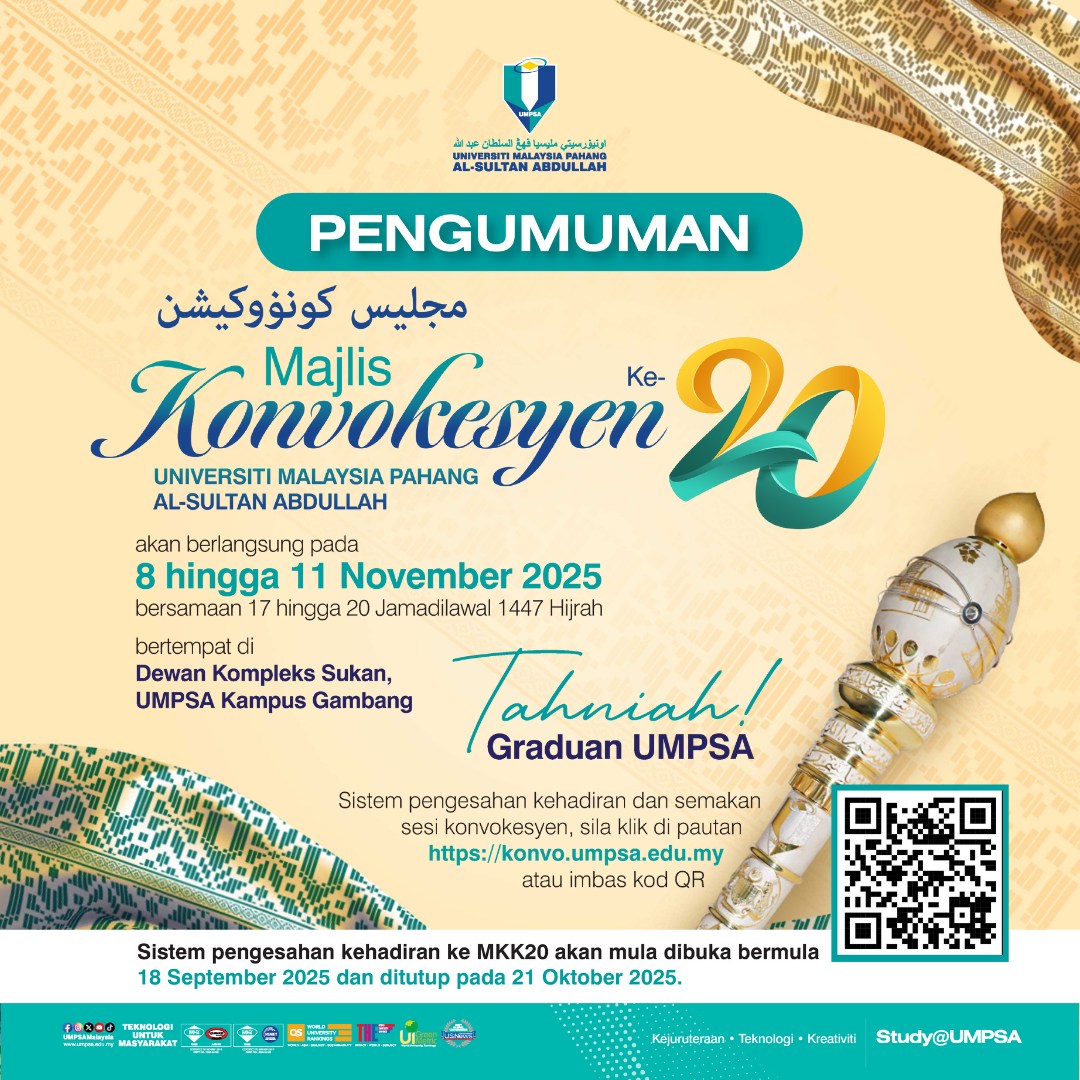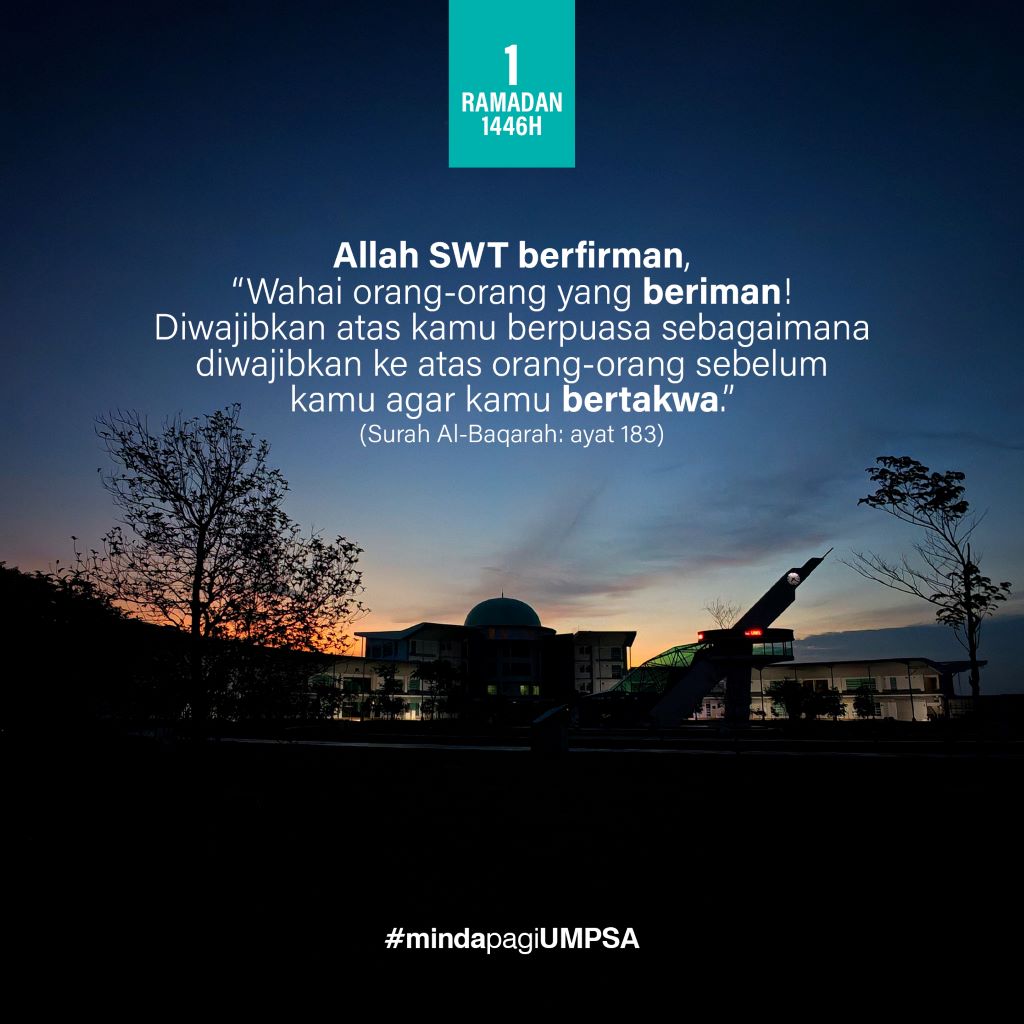UMP sustainable campus greenery initiatives as new attraction
PEKAN, 2 March 2021 - Universiti Malaysia Pahang (UMP) launches campus greenery project involving tree planting zones, forest zones and open areas to be planted with natural plants.
Currently, 27.5% of the area has been gazetted as green zones inside the campus.
For the tree planting zones, there are several divided zones which are the Bioaromatic Arboretum (8 acres), grove zone (2.3 acres), rare plant zone (5.3 acres), Laman Cendekia (1 acre), Recreational Lake (39 acres) and Wetland (30.4 acres).
The forest zone at the campus comprises the UMP-FRIM (Phase 1) reforestation project spanning 6 acres, the UMP-FRIM (Phase 2) reforestation project named the Rimba Lestari spanning 5.6 acres and the UMP Rimba corner with an area of 5.3 acres in a collaborative effort with the Pahang Forestry Department.
Recently, the UMP Vice-Chancellor, Professor Ir. Dr. Wan Azhar Wan Yusoff held a site survey to several of the green zones that have become a new attraction at the UMP Pekan campus such as Rimba Lestari and Bioaromatic Arboretum.
A review of the current progress of the Rimba Lestari and UMP green zones was presented by the Manager from the Centre for Property Management and Development (PPPH), Ernie Nurazlin Lizam.
Rimba Lestari 1 is a collaborative project between UMP and the Forest Research Institute Malaysia (FRIM) which is located between the Faculty of Electrical and Electronic Engineering Technology (FTKEE), Faculty of Mechanical and Automotive Engineering Technology (FTKMA) and Faculty of Manufacturing and Mechatronics Engineering (FTKPM) buildings.
According to Ernie, currently, 1,802 plants from 24 types of forest trees and wooded tropical plants can be found at Rimba Lestari such as tongkat ali, red meranti, chengal, bruas, Indian-almond, jelutong, shrubby simpoh, dark red meranti, false elder, and cannonball tree.
“Currently, PPPH is planning to provide QR codes for each tree and the visitors can simply scan the code to know the type of tree and other information about it,” she said.
Besides Rimba Lestari, UMP forests have also begun to bear fruit since being planted several years ago.
Among the plants found in the UMP forests are durian, mango, sapodilla, honey jackfruit, soursop, and longan.
Interestingly, there are also rare fruits in the UMP forest such as velvet tamarind, tampoi, butterfruit and jentik-jentik fruit.
Another focal point is the Bioaromatic Arboretum which houses plants with herbal aroma and smells either for medicinal or culinary use.
Among the plants found here are citronella grass, champak, mock lemon, ginger, torch ginger and kecubung plant.
Professor Ir. Dr. Wan Azhar congratulated PPPH who is constantly working to preserve the campus’s beauty and hoped that their efforts to sustain the campus greenery will continue with the improvement of several infrastructures to attract more visitors to UMP.
“I hope this area can be a source of information and research for UMP residents on forest plants.
“Rimba Lestari can also be a shortcut for students to get from one place to another.
“Although UMP has provided roofed pathways for the students’ convenience, they can also take the alternative route through Rimba Lestari while enjoying nature’s beauty,” he said.
Besides that, Rimba Lestari can provide opportunities for UMP residents to increase and cultivate the sustainment of the campus greenery.
Professor Ir. Dr. Wan Azhar also spent time visiting and presenting a certificate of appreciation for the staff at the UMP nursery and landscapes for their services of over five years at the university in ensuring that the campus always stays beautiful.
At the same time, he had the opportunity to plant Lagerstroemia spp. (crepe-myrtle or bungor) at Rimba Lestari accompanied by the PPPH Director, Dr. Mohamad Idris Ali.
By: Nor Salwana Mohd. Idris, Corporate Communications Unit, The Office of The Vice-Chancellor
Translation by: Dr. Rozaimi Abu Samah, Engineering College/Faculty of Chemical and Process Engineering Technology
- 164 views





 Reports by:
Reports by: 






